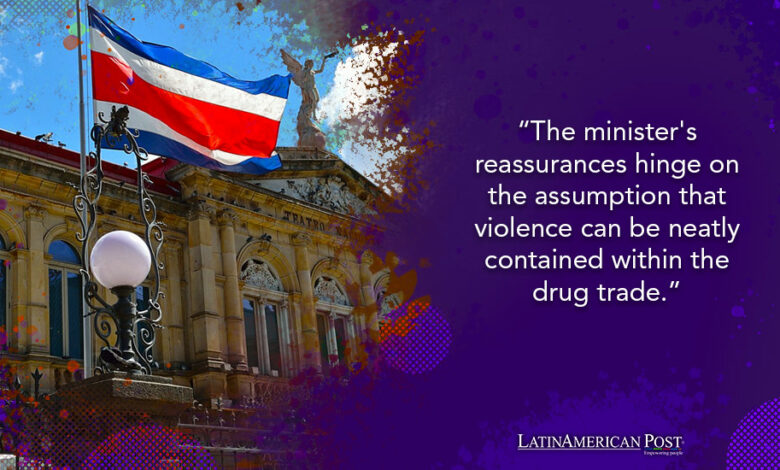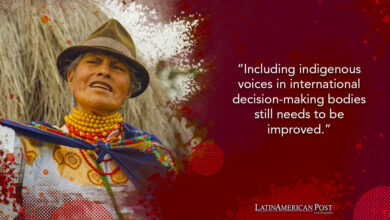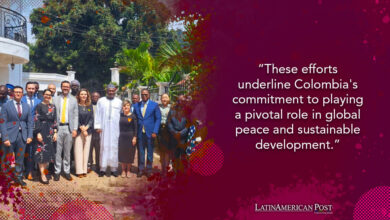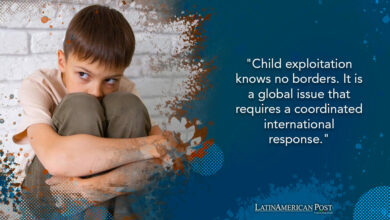Gang Violence and Tourism: Costa Rica’s Safety Illusion

Costa Rica’s assertion that gang violence does not affect tourism is misleading, posing potential risks to both locals and international visitors alike.
Costa Rica, known for its lush rainforests and pristine beaches, is often perceived as a haven for travelers seeking natural beauty and tranquility. However, recent statements by Costa Rican Foreign Minister Arnoldo André Tinoco suggest a troubling disparity between the perceived safety for tourists and the reality of escalating gang violence fueled by drug trafficking.
Safety Concerns in Costa Rica
During a recent event in Spain, Minister Tinoco acknowledged that Costa Rica’s murder rate has escalated from one to approximately 2.5 killings per day, attributing this surge to conflicts between Mexican and Colombian drug trafficking gangs. While Tinoco insisted that these violent clashes are confined to the criminal underworld and do not spill over to affect ordinary citizens or tourists, this perspective is overly optimistic and potentially dangerous.
The minister’s reassurances hinge on the assumption that violence can be neatly contained within the drug trade. Yet, the nature of such violence is neither predictable nor discerning. Gang wars do not respect the lives of bystanders and can erupt in public spaces commonly frequented by tourists, such as markets, roadways, and even resorts. To declare public spaces safe amidst such turmoil reflects not only an underestimation of the problem but also a misunderstanding of the nature of violent crime.
Moreover, the minister’s casual stroll through San José without fear of harm paints a picture of safety that might not be realistic for everyone. It’s one thing for a high-ranking government official to feel secure, quite another for ordinary citizens and tourists who do not have the same level of information or security detail.
Drug Trafficking and Corruption
Tinoco also pointed out that Costa Rica has become a key storage point for cocaine due to its role as a significant exporter of agricultural products. The intertwining of legitimate commerce with illicit drug trafficking at major transport hubs like ports inevitably increases the risk of corruption and violence, which can affect areas frequented by tourists. While efforts to improve security at these ports with new scanners are commendable, they do not address the broader issue of drug-related violence permeating society.
It’s important to note that the infiltration of drug cartels into a country can corrupt various sectors, including law enforcement and local government, leading to a compromised safety environment. When up to $100,000 can be offered to a police officer to look the other way, as the minister himself noted, the reliability of the police force in protecting both citizens and tourists becomes questionable.
Comparatively, neighboring Panama, with a smaller population, has significantly more police officers, highlighting Costa Rica’s inadequate policing resources. Despite plans to bolster the police force, the current situation leaves much to be desired regarding public safety and security.
In addition to the risk of violence, the drug trade often brings with it other crimes, such as robbery and extortion, which can directly impact tourists. The economic desperation accompanying such environments can lead individuals to commit crimes against tourists, who are seen as easy targets for theft.
Furthermore, Latin America’s history with drug cartel violence shows that no country is immune to its effects spilling over into the general population and affecting areas linked to tourism. Countries like Mexico and Colombia have long struggled with the perception of safety due to cartel violence, which has undoubtedly impacted their tourism industries.
Addressing Safety Concerns
Costa Rica’s economic reliance on tourism means acknowledging and addressing these safety concerns about protecting visitors and safeguarding the country’s financial future. Tourists have a myriad of destinations to choose from, and safety is a paramount concern when making travel decisions. Pretending that gang violence does not affect tourists does not make the problem go away; it only undermines efforts to improve safety and security genuinely.
To truly protect both its citizens and tourists, Costa Rica needs a more robust approach to policing and security, one that goes beyond the current measures. This includes not only increasing the police presence but also enhancing their capabilities through training and better resources. International cooperation, like that mentioned with the United States for maritime surveillance, should be expanded to improve intelligence and prevent the flow of drugs.
While Costa Rica remains a beautiful and welcoming destination, both government officials and potential tourists must recognize and address the realities of drug-related violence. Acknowledging the problem is the first step towards creating a safer environment for everyone. Dismissing the impact of gang violence on tourism not only misleads potential visitors but also hampers effective solutions to a growing national crisis.





